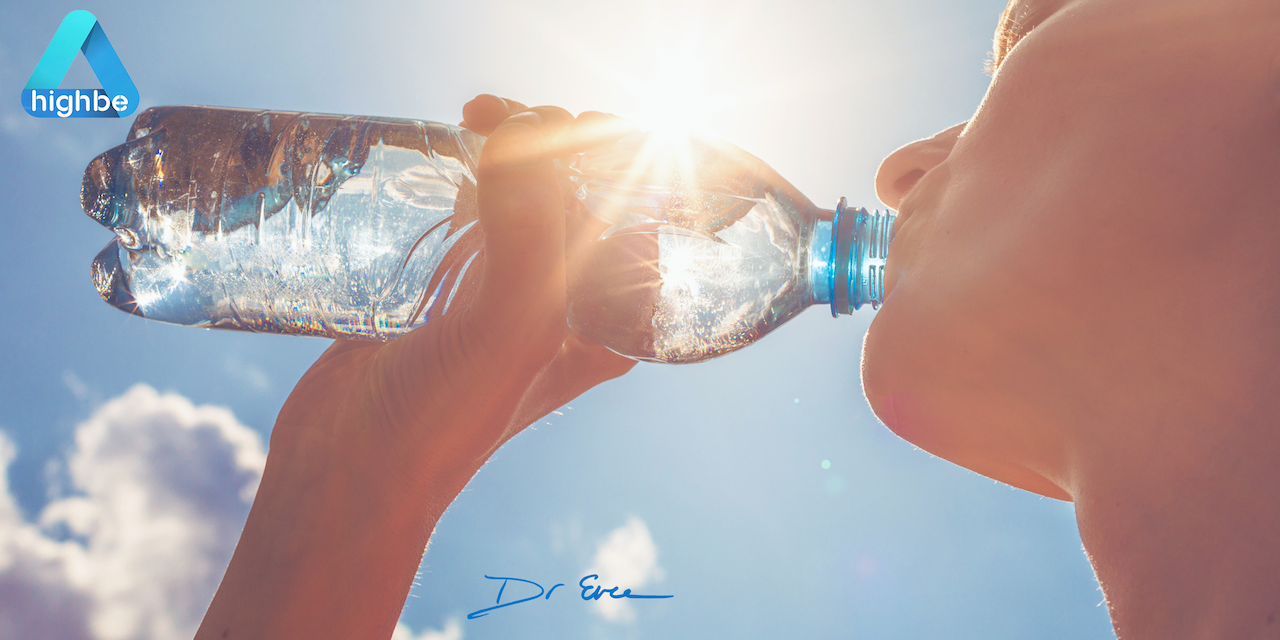
Staying hydrated is crucial for maintaining health, especially as we age and during exercise.
Dehydration can lead to fatigue, headaches, dizziness, muscle cramps, dry wrinkled skin, and more serious health issues over time.
Dehydration occurs when you use or lose more fluid than you take in, and your body doesn’t have enough water and other fluids to carry out its normal functions.
Tips to avoid dehydration:
- Don’t wait until you’re thirsty to drink. By the time you feel thirsty, you may already be slightly dehydrated.
- Eat Foods High in Water: Many fruits and vegetables, such as watermelon, cucumbers, and oranges, are high in water content and can contribute to your overall fluid intake.
- Monitor Fluid Loss During Hot Weather and Illness: The body loses fluids more quickly in hot conditions due to increased sweating. During Illness, Fever, vomiting, or diarrhea cause your body to lose additional fluids. Be sure to drink more fluids to compensate.
- Exercise and Sports: Drink water before, during, and after a workout and consider adding electrolytes.
- Avoid Excess Alcohol and Caffeine: Both alcohol and caffeine can lead to dehydration. Green tea is also dehydrating so use it in moderation and drink plenty of water to compensate.
- Understand Your Individual Needs: Certain conditions such as diabetes or heart disease may require specific fluid recommendations. Children and older adults are more susceptible to dehydration.
- Recognize Signs of Dehydration: Early signs include thirst, darker urine, and decreased urine production. Recognizing these can prompt immediate action to rehydrate.
- Use Technology and Reminders: Setting reminders to drink water can be helpful, especially for those who might forget to hydrate regularly.
The Essential Role of Electrolytes in Hydration and Exercise
Hydration isn’t just about water; it’s also about electrolytes, those tiny but mighty agents that play a vital role in keeping our bodies functioning properly, particularly during physical activities.
Unless you live in the mountains and are drinking from waterfalls, the water you drink has most likely a poor electrolyte content. So adding a good blend of electrolytes to your water once a day can be very helpful.
Understanding Electrolytes and Their Functions
Electrolytes are minerals found in your blood, sweat, and urine that carry an electric charge. The main electrolytes include sodium, potassium, calcium, magnesium, and chloride. These elements are key in balancing the amount of water in your body, pH level (acid/base balance), moving nutrients into your cells, and moving wastes out of your cells.
During exercise, your body loses electrolytes through sweat, particularly sodium and potassium. This loss can disrupt the delicate balance of electrolytes in your body, leading to a range of problems from minor (like muscle cramps) to severe (like hyponatremia, where low sodium levels lead to confusion, headaches, and in extreme cases, seizures).
Why Electrolytes Are Crucial for Hydration
Water alone isn’t always enough. This is particularly true in endurance sports or exercises lasting more than an hour. When you sweat, you lose both water and electrolytes, and replenishing just the water can dilute the remaining electrolytes in your body. This imbalance can lead to decreased performance, muscle cramps, fatigue, and even more serious health issues. Electrolytes help in regulating fluid balance within the cells and are essential for muscle function and nerve signal transmission. Without sufficient electrolytes, your muscles may not work optimally, and you might experience muscle spasms or weakness.
How to Maintain Electrolyte Balance
- Hydrate with Electrolyte-Infused Drinks: Regular water is fine for short exercises, but for longer sessions, consider drinks with added electrolytes.
- Eat Electrolyte-Rich Foods: Incorporate foods into your diet that are high in key electrolytes. Bananas and oranges are excellent for potassium, dark green leafy vegetables for calcium, nuts and seeds for magnesium, and Himalayan or sea salt for sodium.
- Balance Water Intake: Drinking too much water, especially if you’re not simultaneously replacing electrolytes, can “dilute” your electrolytes and lead to a condition called hyponatremia. It’s important to drink enough to stay hydrated but in excess of 3 liters a day you need to be actively replacing electrolytes.
- Listen to Your Body: Signs of electrolyte imbalance include muscle cramps, headaches, fatigue, and nausea. If you experience these symptoms during or after exercise, it might be a sign to reassess your electrolyte intake
- Consult a Professional for Personalized Advice: For those engaged in high-intensity sports or having specific health conditions, it might be beneficial to consult a a healthcare provider for personalized advice on managing electrolyte balance.
Electrolytes are not just buzzwords in the sports world; they are essential components for our body’s hydration and overall function, especially during physical activities. By understanding their importance and knowing how to maintain a healthy balance, you can enhance your performance, avoid potential health issues, and ensure that your body is adequately fueled and hydrated during your exercise routines.
Remember, staying hydrated is about more than just drinking water; it’s about keeping those vital electrolytes in check too.
As always, if you have any medical condition, consult with your doctor before taking additional electrolytes.
In Vibrant Health,
Dr. Evelyne Leone, DO, Faarfm, Abaarm
